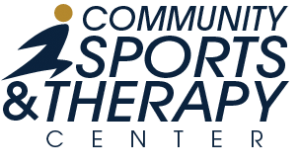

What are TMJ Disorders?
Temporomandibular joint and muscle disorders, commonly called “TMD,” are a group of conditions that cause pain and dysfunction in the jaw joint and the muscles that control jaw movement. The temporomandibular joint (TMJ) is one of the most complex joints in the human body and connects your jawbone to your skull. It is an essential part of your everyday life that helps you eat, speak, chew, and more.
Currently, an estimated 10 million people have TMJ disorders, and roughly 25% of the population have symptoms at some point in their lives.
How can physical therapy help treat TMJ disorders?
TMJ disorders have many similarities to other musculoskeletal disorders seen throughout the body and can be treated by physical therapists. Therefore, therapeutic approaches for other musculoskeletal disorders generally apply to TMJ disorders.
Physical therapy can help manage patient symptoms and provide treatment for TMJ disorders:
Posture Education
Physical therapists are trained to assist with providing treatment for a variety of postural dysfunctions through therapeutic exercise and education. Altered cervical posture can create muscle imbalances which place abnormal strain on the temporomandibular joint. Education on poor posture habits such as sitting at a desk for long periods with head too far forward, cradling a telephone receiver against the same shoulder, and more are also addressed.
Evaluation & Treatment of Cervical Spine
Often the cervical spine can play a role in TMJ dysfunction and pain. Physical therapists are able to evaluate and treat cervical spine disorders that may be contributing to TMJ.
Improving Jaw Movement
Physical therapists can use skilled manual therapy techniques and exercises to assist with improving jaw ROM, relaxing soft tissue, and relieving pain.
Pain Interventions
Various modalities can be used to assist with decreasing pain and promoting tissue healing, such as ultrasound, dry needling, and electrical stimulation.
Exercise Techniques
Physical therapists can teach patients exercises to improve strength, ROM, and muscle function of surrounding musculature to improve symptoms and function.
Education and Self-Management
A home program can be established to improve jaw function and symptoms. Physical therapists can assist with educating patients on basic modifications that can be made to help reduce stress on the TMJ.
Referral to Dentist
Physical therapists can refer or work with a patient’s dentist to discuss other treatment options and maximize improvements.
